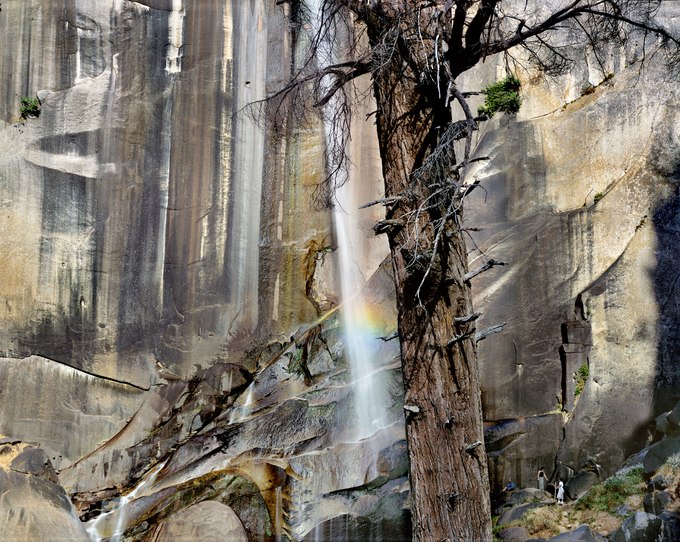A once-lofty conifer, the tree trunk shown in the foreground of this photograph, had most of its canopy snapped off a century ago. Photographers Carleton Watkins and Ansel Adams photographed the falls in 1861 and 1948, respectively, when the enormous tree was still alive. Long since bare of needles, it stands erect in death, overlooking Vernal Falls like an ancient sentinel.
Though named Vernal Falls in 1851, it was originally called Yan-o-pah – or "little cloud" in the language of the Ahwahnechee. These people inhabited Yosemite Valley for several millennia, nestled within three-thousand-foot canyons on the western front of California's Sierra Nevada Range. Vernal Falls and, upstream, Nevada Falls comprise the steepest stretch of the Merced River. Glaciers excavated loose, fractured rock a million years ago, clearing it down to its hardened granite bedrock.
In the mid-19th century, entrepreneurs carved hundreds of steps into the rock and charged a fee to hike from the valley floor to the top of Vernal Falls. Today, tourists no longer pay to climb The Mist Trail through the spray and rainbows generated by the thundering falls. Usually wide and roaring, the Merced River slowed to only a trickle during the season's extraordinarily low river flow, and Vernal Falls was almost silent. The plunging river's breadth typically veiled the entire background of this photograph. On this day, a dry spell revealed the usually hidden wall exquisitely painted with colorful streaks.
Location research and commentary by James Baker.

